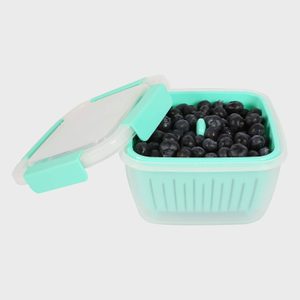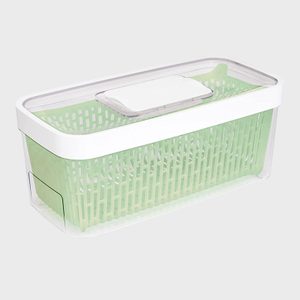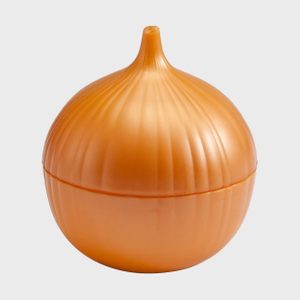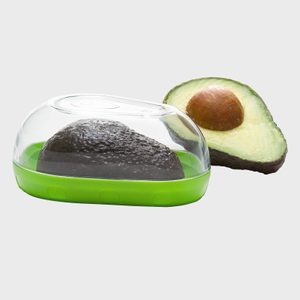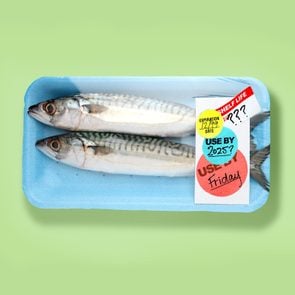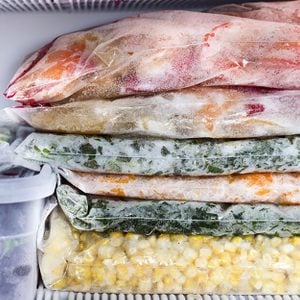How to Store Produce: Fruit and Vegetable Storage Tips
Updated: Jan. 17, 2024
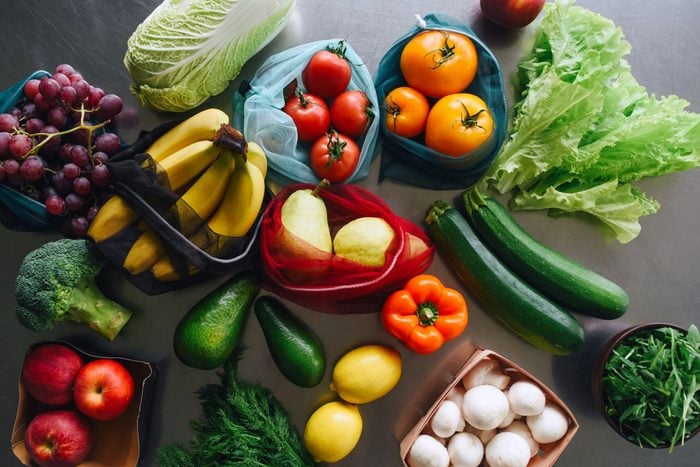
Learn the basics of fruit and vegetable storage to maximize freshness and maintain food safety
Anyone who’s ever crunched down on an underripe, orange tomato or twisted open an avocado to find it’s gone bad understands the importance of fruit and vegetable storage. But there’s more to proper produce storage than ensuring quality and taste—though those certainly rank high when it comes to your food.
“Everyone wants to know that they’re storing produce the right way. Unfortunately, there is no one right answer, because it depends on how you are approaching food storage,” says Natalie Seymour, a food safety and audit development manager in global food retail at Ecolab. “Some folks ask because they want to know the best way to store produce from a quality standpoint. They want to help their fruit ripen or keep it from changing texture, color or smell. Others are more focused on food safety. They want to know how to avoid pathogenic growth and ensure the fruit is safe to eat.”
Still others are concerned with saving money by reducing food waste. After all, produce isn’t a nonperishable food you can stash away and forget about like salt, and it doesn’t come with sell-by dates. It pays to go beyond food-safety concerns like how long food is good for in the fridge without power. That’s why we’re focusing on fruit and vegetable storage, including ways to maximize the freshness and safety of your produce (hint: fridge organization is part of it). Read on for expert tips and handy “how to store fruits and vegetables” charts.
Which fruits and veggies should be stored in the fridge?
Whether or not you choose to store fruits and vegetables in the fridge is less a question of food safety than it is of prolonging the life of the food. “Most raw produce items don’t require refrigeration from a food-safety standpoint,” says Seymour. Instead, the refrigerator keeps produce from spoiling too fast, which allows you to grocery shop just once or twice a week instead of every day.
So if you are not planning to eat them within a day or two, the following fruits and vegetables should be stored in the fridge:
- Apples
- Asparagus
- Beets
- Berries
- Bok choy
- Broccoli
- Brussels sprouts
- Cantaloupe
- Carrots
- Cauliflower
- Celery
- Cherries
- Cucumbers
- Eggplant
- Grapes
- Grapefruit
- Leafy greens
- Leeks
- Lemons
- Limes
- Mangoes
- Mushrooms
- Oranges
- Parsnips
- Peas
- Peppers
- Pineapple
- Watermelon
- Zucchini
Of course, not all fruits and veggies thrive in the fridge. Tomatoes are notoriously finicky about cool temps. Chilled, they won’t properly ripen and develop the ideal flavor, so only ripe tomatoes should go in the refrigerator. The same goes for bananas. Make sure to know the fruits and vegetables that should not be stored together.
Psst! Learn about the smallest fruit in the world—ant-sized, and packed with protein.
How to store fruit
When it comes to produce, how long foods last in the fridge depends on where you store them. “Produce bins at the bottom of home fridges are great locations to store fruit, as it keeps them away from the cooling element and reduces the risk of freezing,” says Seymour. According to the U.S. Department of Agriculture’s Food Safety and Inspection Service, fruits require lower-humidity conditions to stay fresh for longer, which is why these crisper drawers have controls that allow you to adjust the humidity level inside.
In addition to the temperature control, these drawers are a smart choice when it comes to both fruit and vegetable storage because they keep produce away from raw meat, poultry, seafood and eggs. “There is a risk of illness if these animal products drip onto the produce and they are consumed either raw or undercooked,” Seymour explains. “One thing I do at home is use a single drawer to store raw meat and another for produce. I also store the meat in a plastic bag to make sure that they are stored separately.”
Using containers that have been designed to store certain foods, such as berry containers and crisper containers, is also a smart choice, Seymour adds. “These containers can be helpful to some to maintain quality and extend the life of the produce. Many of them work by controlling the air and humidity, based on what is best for the particular fruit,” she explains. “Regardless of the type of container, one of the most important things is to keep them clean.”
How long does fruit last in the fridge?
The chart below offers suggestions for how to store fruit in the fridge, including when and how long, based on recommendations from the FoodKeeper App created by the U.S. Department of Health and Human Services.
Consider this your guide for whole fruit. Once you’ve sliced up a piece of fruit, you’ll need to eat it within a few days.
| Fruit | Shelf Life |
| Apples | 4–6 weeks |
| Blackberries | 3–6 days |
| Blueberries | 1–2 weeks |
| Cantaloupe | 5–15 days |
| Cherries | 2–3 days |
| Grapes | 1 week |
| Kiwi | 3–6 days |
| Lemons, limes, oranges and grapefruit | 10–21 days |
| Mango | 1 week |
| Peaches, nectarines, plums and pears | 3–5 days |
| Pineapple | 5–7 days |
| Raspberries | 2–3 days |
| Strawberries | 2–3 days |
| Watermelon | 3–4 days |
How to store vegetables
When storing vegetables in the fridge, Seymour suggests following the same general strategies as she recommends for fruit: using the crisper drawers and food-storage containers (like an onion saver and avocado keeper) and keeping them away from raw animal products. According to the Food Safety and Inspection Service, vegetables require higher-humidity conditions than fruits do, so crisper drawers should be adjusted accordingly for optimal vegetable storage.
That said, there are some vegetables that require more specific steps. “There are a few raw produce items that need temperature control to prevent the growth of bacteria,” explains Seymour. “These include cut tomatoes, cut leafy greens, seed and bean sprouts, and garlic and oil mixtures.”
There are also some vegetables that you may want to store in a certain place to maintain freshness and texture. “For veggies with thin leaves or a high water content, like leafy greens, herbs, celery and carrots, it is best to keep them away from the cooling element,” Seymour says. “These items will freeze more easily and may be less appetizing once they thaw.”
How long do vegetables last in the fridge?
The chart below offers suggestions for how to store vegetables in the fridge, including when and how long, based on recommendations from the FoodKeeper App.
Keep in mind: These guidelines are for whole veggies. As with sliced and diced fruits, you’ll need to eat cut vegetables within a few days. And cooked veggies will keep in the fridge for about three to four days.
| Vegetable | Shelf Life |
| Asparagus | 3–4 days |
| Avocados | 3–4 days (after ripening in the pantry) |
| Beans | 3–5 days |
| Beets | 1–2 weeks |
| Bell peppers | 4–14 days |
| Bok choy | 2–3 days |
| Broccoli and cauliflower | 3–5 days |
| Brussels sprouts | 3–5 days |
| Cabbage | 1–2 weeks |
| Carrots and parsnips | 2–3 weeks |
| Celery | 1–2 weeks |
| Cucumbers | 4–6 days |
| Eggplant | 4–7 days |
| Kale | 3–5 days |
| Leeks | 1–2 weeks |
| Mushrooms | 3–7 days |
| Onions | 2 months |
| Peas | 3–5 days |
| Spinach | 3–7 days |
| Tomatoes | 1 week (after ripening in the pantry) |
| Zucchini | 1 week |
When to toss produce
While you may be quick to discard fruits and vegetables once they start to wilt, soften or turn a different color, Seymour says that you don’t always need to trash them, at least from a safety standpoint. Unlike foods that you should never eat past their expiration dates, many of these fruits and veggies are still safe for consumption.
“Many of the signs of spoilage associated with fruits and vegetables are more about quality than food safety. Produce that is bruised, cut, wilted, soft or has turned color is completely fine,” she explains. “From a food-safety perspective, I don’t recommend eating produce that is visibly moldy or items that have been cut and left at room temperature for long periods of time.” In these two cases, the presence of potentially harmful bacteria is either visible or likely present, which means your produce should go into the trash.
Now that you have all the food facts on fruit and vegetable storage, discover how long milk lasts, if it’s safe to eat expired eggs and how long you can keep cooked chicken in the fridge.
Get Reader’s Digest’s Read Up newsletter for tips on cleaning, travel and tech, plus humor and fun facts, all week long.
Sources:
- Natalie Seymour, food safety and audit development manager in global food retail at Ecolab
- USDA Food Safety and Inspection Service: “Refrigeration & Food Safety”
- U.S. Department of Health and Human Services: “FoodKeeper App”

